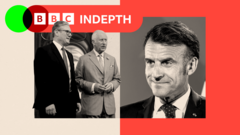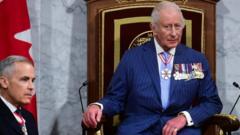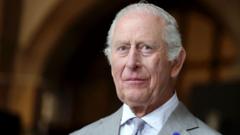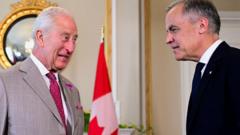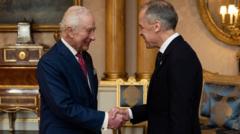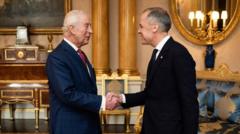The storied history of Britain’s Royal Train, which has been the majestic conveyance for monarchs since the time of Queen Victoria, is set to conclude as Buckingham Palace has announced its retirement amid cost-cutting measures. The specially-designed rail cars have ferried the royal family across the country for over 150 years on official duties and personal travels, making it a hallmark of royal tradition and luxury.
The inception of royal train journeys dates back to June 1842 when Queen Victoria, initially hesitant due to concerns about the mental effects of high-speed travel, embarked on a train ride encouraged by her husband, Prince Albert. The monarch eventually embraced rail travel, finding it surprisingly pleasant, as she recorded in her journal.
Queen Victoria commissioned a range of private railcars adorned with opulent decor, including gold and silk, emphasizing the luxury associated with royal travel. However, following the traditions of her time, she refrained from eating on board, believing it detrimental to her health.
The royal train's retirement symbolizes a broader shift within the monarchy, reflecting modernizing attitudes towards royal expenditures. Despite its end marking the closure of an era connecting King Charles III with his illustrious ancestor Queen Victoria, the legacy of the royal train will endure, embedded in the annals of British history.
The inception of royal train journeys dates back to June 1842 when Queen Victoria, initially hesitant due to concerns about the mental effects of high-speed travel, embarked on a train ride encouraged by her husband, Prince Albert. The monarch eventually embraced rail travel, finding it surprisingly pleasant, as she recorded in her journal.
Queen Victoria commissioned a range of private railcars adorned with opulent decor, including gold and silk, emphasizing the luxury associated with royal travel. However, following the traditions of her time, she refrained from eating on board, believing it detrimental to her health.
The royal train's retirement symbolizes a broader shift within the monarchy, reflecting modernizing attitudes towards royal expenditures. Despite its end marking the closure of an era connecting King Charles III with his illustrious ancestor Queen Victoria, the legacy of the royal train will endure, embedded in the annals of British history.











